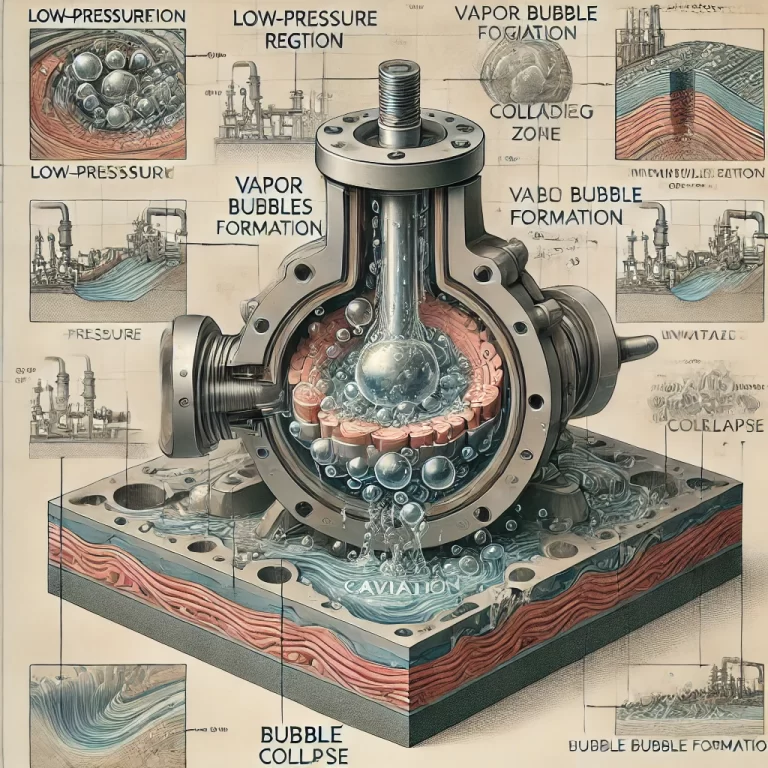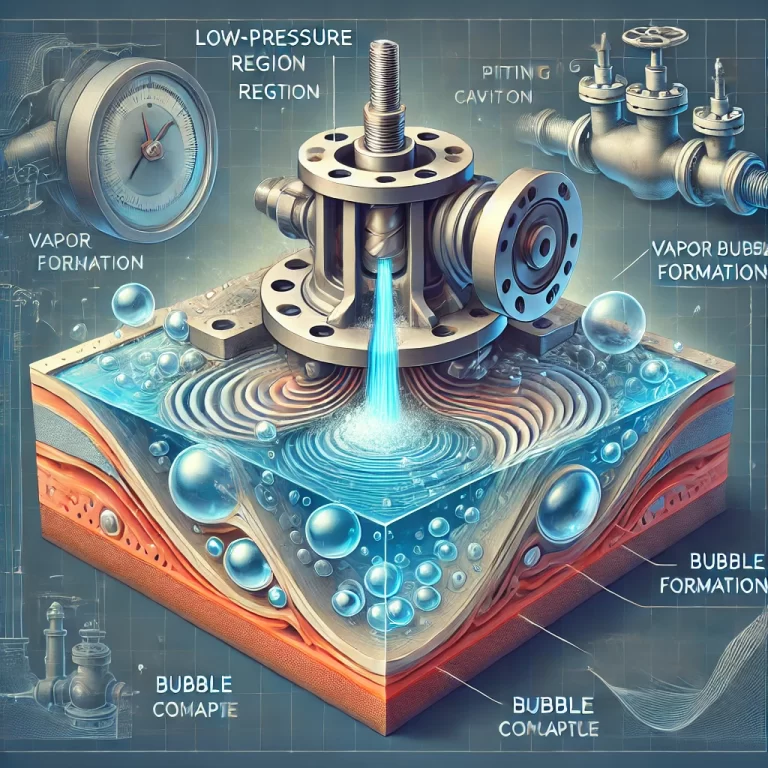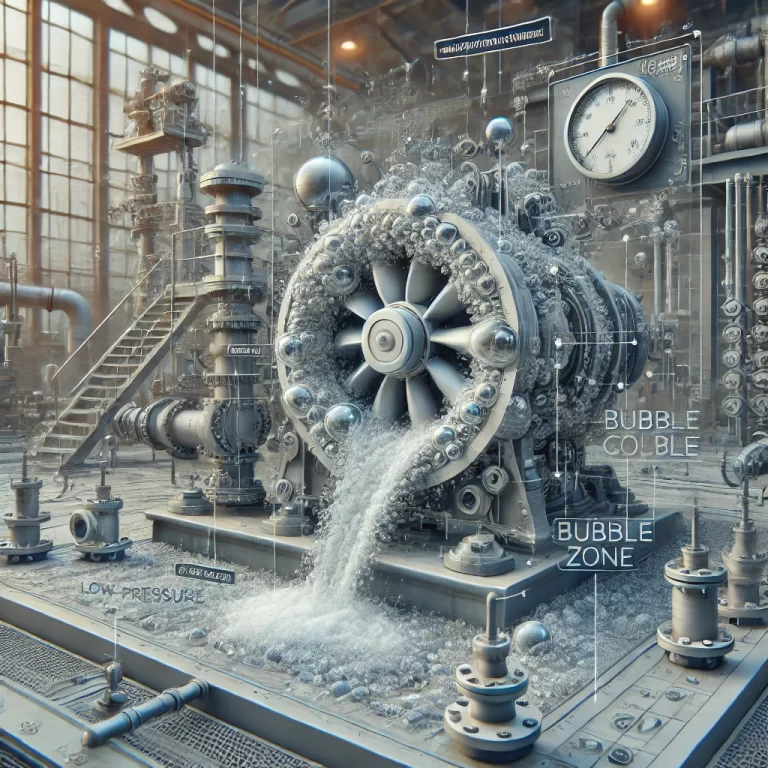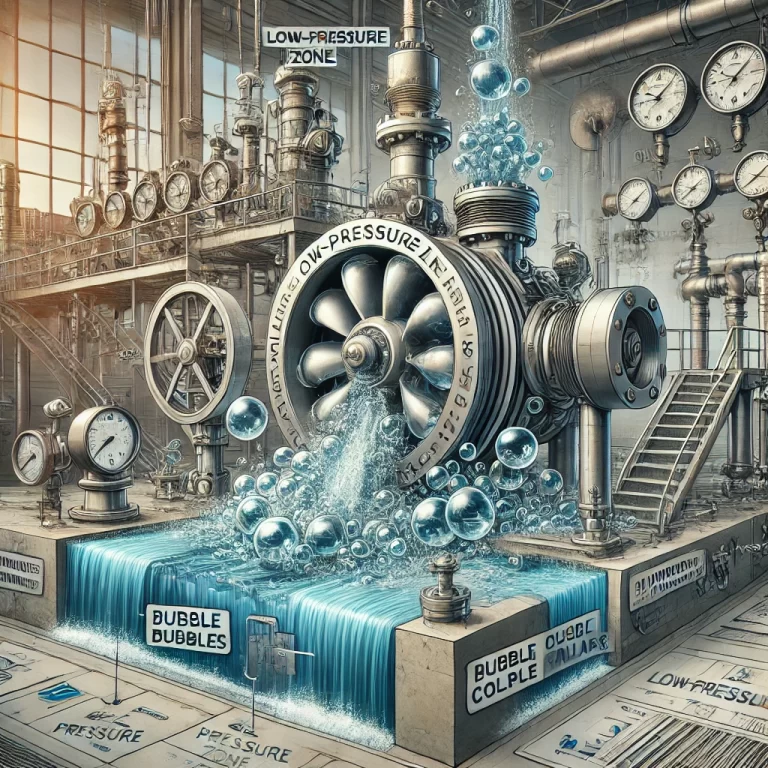Cavitation is a significant phenomenon in fluid dynamics that occurs in a variety of industrial applications, particularly in the instrumentation sector. It involves the formation and subsequent collapse of vapor bubbles within a liquid, which can have detrimental effects on equipment and systems. Understanding cavitation is crucial for designing and operating reliable and efficient fluid systems.
What Is Cavitation?
Cavitation occurs when the local pressure in a liquid falls below the liquid’s vapor pressure, causing the liquid to vaporize and form bubbles. These vapor bubbles are carried by the flow and subsequently collapse when they encounter regions of higher pressure. The collapse of these bubbles generates intense shockwaves, high temperatures, and local pressures, which can damage equipment surfaces and reduce performance.

The Process of Cavitation
Cavitation involves three key stages:
Formation of Vapor Bubbles:
In regions where fluid pressure drops below the vapor pressure (e.g., near pump inlets, valve throttles, or flow restrictions), the liquid turns into vapor, forming bubbles.Transport of Bubbles:
The bubbles are carried downstream by the liquid flow, moving from the low-pressure region to areas of higher pressure.Collapse of Bubbles:
When the bubbles reach regions of higher pressure, they collapse violently, generating microjets and intense localized pressure spikes. This process can be destructive to nearby surfaces.
Common Causes of Cavitation in Instrumentation
High Fluid Velocity:
In narrow passages or sharp bends, fluid velocity increases, leading to a drop in pressure that can cause cavitation.Inadequate System Pressure:
Insufficient inlet pressure in pumps or valves can reduce local pressure to below the vapor pressure of the liquid.Improper Equipment Design:
Poorly designed flow systems, such as sharp-edged components or abrupt transitions in piping, can create conditions conducive to cavitation.High Temperature:
Elevated fluid temperatures increase the vapor pressure of the liquid, making it more susceptible to cavitation.

Impacts of Cavitation
Material Damage:
- The repeated collapse of vapor bubbles causes pitting and erosion on metal surfaces, leading to a honeycomb-like appearance. This damage is especially prevalent in pump impellers, valve seats, and flow meters.
Loss of Efficiency:
- Cavitation reduces the efficiency of pumps, turbines, and valves by disrupting fluid flow and increasing energy losses.
Noise and Vibrations:
- Cavitation generates distinct noise and vibrations, which can propagate through the system, affecting performance and stability.
Reduced Instrument Lifespan:
- Over time, cavitation accelerates wear and tear, leading to premature equipment failure.
Scenarios Where Cavitation Commonly Occurs
Pumps:
Cavitation often occurs at the pump suction inlet when the net positive suction head (NPSH) is insufficient.Control Valves:
High-pressure drop across control valves can lead to cavitation, especially in throttling applications.Flow Meters:
Instruments like turbine flow meters or differential pressure flow meters may experience cavitation under high flow rates.Heat Exchangers:
Sudden temperature changes in heat exchangers can cause localized pressure drops, leading to cavitation.

Preventing and Mitigating Cavitation
System Design Optimization:
- Avoid sharp edges and sudden transitions in piping to minimize pressure drops.
- Design components with gradual pressure recovery profiles.
Control Operating Conditions:
- Maintain adequate inlet pressure in pumps and valves.
- Reduce fluid velocity in high-risk areas.
- Operate equipment within recommended temperature and pressure ranges.
Use Cavitation-Resistant Materials:
- Select materials such as stainless steel or coated alloys that can withstand cavitation-induced damage.
Implement Anti-Cavitation Devices:
- Use anti-cavitation trim in control valves or install diffusers in pumps to stabilize flow.
Increase System Pressure:
- Raise the system pressure to ensure it stays above the liquid’s vapor pressure, particularly at critical points.
Regular Maintenance and Monitoring:
- Conduct periodic inspections of high-risk components and replace worn-out parts.
- Monitor for signs of cavitation, such as unusual noise, vibrations, or pressure fluctuations.
Case Studies of Cavitation Management
Pumping Systems in Water Treatment Plants:
By redesigning the pump inlet piping and increasing the NPSH, a water treatment facility reduced cavitation damage and improved pump efficiency.Control Valves in Petrochemical Refineries:
Replacing standard valve trims with anti-cavitation trims minimized erosion and extended the service life of critical valves.Turbine Flow Meters in Industrial Applications:
Installing flow straighteners upstream of meters reduced turbulence and cavitation, leading to more accurate measurements and reduced wear.

Conclusion
Cavitation is a complex phenomenon that can severely impact the performance, reliability, and lifespan of instrumentation and equipment. By understanding the causes and effects of cavitation, engineers can design and operate systems that minimize its occurrence. Through careful selection of materials, optimization of system design, and implementation of anti-cavitation strategies, the risks associated with cavitation can be effectively mitigated, ensuring long-term operational success.
